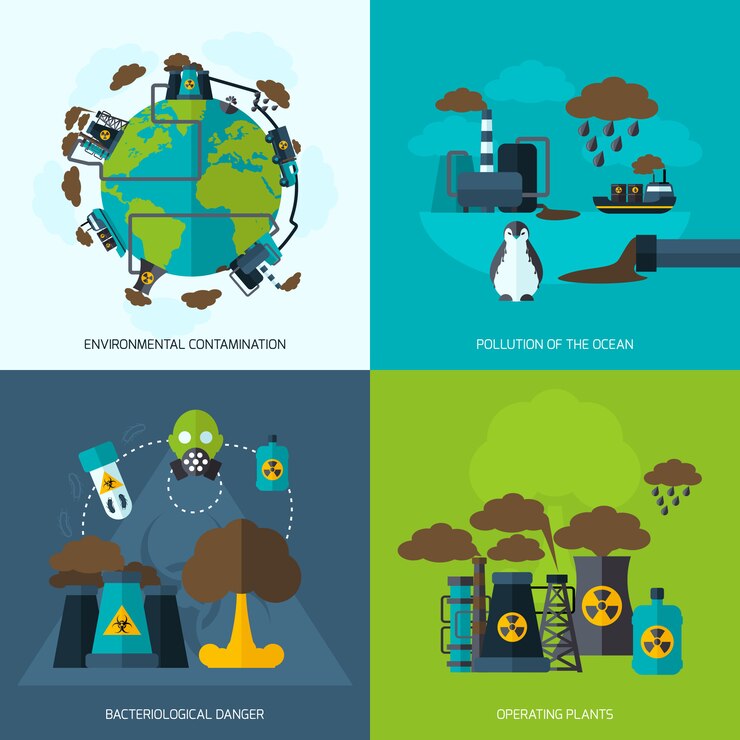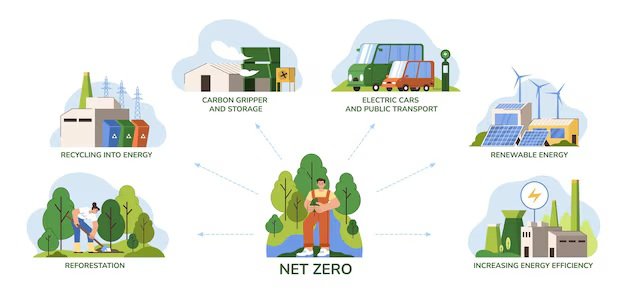International Environmental Regulations: A Comprehensive Expert Guide
Our planet is changing faster than we ever expected. From devastating wildfires to rising sea levels and polluted air, we are feeling the consequences of environmental damage in real time. The big question is: how do we fix it? This is where international environmental regulations come into play. These rules and agreements are not just words on paper; they are the foundation for global efforts to protect nature, human health, and our future.
Without these laws, imagine the chaos—factories dumping toxic waste into rivers, corporations destroying forests without consequences, and carbon emissions skyrocketing unchecked. These regulations exist to prevent that from happening. But are they truly effective? Do they hold governments and businesses accountable, or are they just well-intended promises?
I remember speaking with an environmental scientist who was deeply involved in the Kyoto Protocol negotiations. She said something that stuck with me: “Without global cooperation, every country would act in its own short-term interest, and we would all suffer in the long run.” That’s the core of international environmental regulations—they ensure that countries work together rather than against each other.
In this guide, we’ll explore the most important international environmental regulations, how they impact our daily lives, and what more needs to be done to make them truly effective.

In This Article
- The Key International Environmental Regulations
- Regulations on Pollution Control and Waste Management
- Regulations Protecting Biodiversity and Natural Resources
- Challenges and Shortcomings of International Environmental Regulations
- The Future of International Environmental Regulations
- Conclusion: How You Can Support Global Environmental Regulations
The Key International Environmental Regulations
1. The Paris Agreement (2015)
Imagine sitting in a room with leaders from nearly every country in the world, all trying to solve one of humanity’s biggest problems—climate change. That’s exactly what happened in 2015 at the COP21 summit in Paris. The result? The Paris Agreement—a global pact aimed at keeping global warming well below 2°C, with a strong push to keep it under 1.5°C.
What Does It Do?
- Signed by 196 countries, this agreement requires each nation to set its own climate goals, known as Nationally Determined Contributions (NDCs).
- Every five years, countries must review and strengthen their targets.
- It also pushes for financial support to help developing countries adapt to climate change.
Does It Work?
The Intergovernmental Panel on Climate Change (IPCC) found that if every country sticks to its commitments, we could limit warming to 2.4°C by 2100. While that’s still above the 1.5°C target, it’s a lot better than the 4°C+ warming we were headed for before the agreement. The challenge? Some countries aren’t meeting their targets, and enforcement is tricky. Still, the Paris Agreement is a step in the right direction.
2. The Kyoto Protocol (1997)
Before the Paris Agreement, there was the Kyoto Protocol, signed in 1997. This was the first big international effort to cut greenhouse gas emissions. Unlike Paris, Kyoto was legally binding, meaning if countries didn’t meet their targets, they could face consequences.
What Was the Goal?
- Reduce greenhouse gas emissions in developed countries.
- Set legally binding emission reduction targets.
- Introduced carbon trading mechanisms, like the Clean Development Mechanism (CDM), which allowed nations to buy and sell emissions credits.
Did It Work?
Results were mixed. Some countries, like Japan, struggled at first but eventually reduced emissions by investing in renewable energy and industrial efficiency. Others, including the United States, never fully committed. The Kyoto Protocol paved the way for later agreements, but it didn’t include big polluters like China and India in its early phases, limiting its effectiveness.
3. The Montreal Protocol (1987)
This one is a true success story. The Montreal Protocol was created to phase out ozone-depleting substances (ODS)—chemicals like CFCs that were destroying the Earth’s protective ozone layer. Without the ozone layer, harmful UV rays from the sun would pose a serious threat to humans, animals, and the environment.
What Makes It Special?
- It worked! The Montreal Protocol is considered one of the most successful environmental treaties ever.
- It led to a 98% reduction in ozone-depleting substances worldwide.
- Unlike many other treaties, it had strict enforcement and financial support for developing nations.
The result? According to NASA, the ozone layer is on track to fully recover by 2066. Without this treaty, we’d be facing dangerous levels of UV radiation today.
Learn More: What is Green Manufacturing?
Regulations on Pollution Control and Waste Management
Pollution is one of the biggest threats to our environment and health. Over the years, countries have come together to create international agreements that tackle the problem head-on. Two of the most significant ones are the Basel Convention (1989) and the Stockholm Convention (2001). These agreements have shaped how the world deals with hazardous waste and harmful chemicals, protecting people and the planet.
1. The Basel Convention (1989): Stopping Toxic Waste Dumping
Imagine if powerful countries could just ship their toxic waste to poorer nations without consequences. Before the Basel Convention, that was happening more often than you’d think. Factories in wealthier nations would produce hazardous waste—chemicals, heavy metals, and industrial by-products—and instead of dealing with it properly, they would send it off to countries that lacked the resources to handle it safely. This led to massive environmental damage and health crises in many parts of the world.
What the Basel Convention Does
- It prevents developed countries from dumping hazardous waste in developing nations.
- It encourages countries to minimise waste production and focus on recycling.
- It requires countries to get permission before sending hazardous waste across borders.
A Real-Life Example
In 2019, the Philippines sent back 69 shipping containers full of illegally dumped Canadian waste. The waste had been falsely declared as recyclable materials but turned out to be household garbage and hazardous plastics. The Philippine government took a stand, demanding that Canada take responsibility. This incident became a global reminder that international laws like the Basel Convention are essential in preventing wealthier nations from exploiting others through waste dumping.
2. The Stockholm Convention (2001): Fighting Toxic Chemicals
Some chemicals are so harmful that even tiny amounts can cause cancer, birth defects, and other serious health problems. Before strict regulations, these chemicals—called Persistent Organic Pollutants (POPs)—were used freely in agriculture, industry, and consumer products. POPs don’t break down easily and can linger in the environment and human bodies for decades, spreading through air, water, and food chains.
What the Stockholm Convention Does
- It bans or restricts the use of dangerous chemicals like DDT and PCBs.
- It protects human health and ecosystems by eliminating the most harmful substances from production and use.
- It helps countries replace toxic chemicals with safer alternatives.
A Measurable Impact
A 2022 World Health Organisation (WHO) report found that human exposure to DDT dropped by 40% in countries enforcing strict bans under the Stockholm Convention. This has led to fewer pesticide poisoning cases, improved reproductive health, and reduced contamination in food and water. However, some nations still use DDT for malaria control under WHO guidelines.
Why These Conventions Matter
These international agreements aren’t just bureaucratic policies—they save lives and protect the environment. When countries come together to enforce pollution control laws, we see real improvements: cleaner air, safer food, and fewer toxic dumps in vulnerable communities. But challenges remain, as enforcement varies across regions, and some industries still push back against regulations.

Regulations Protecting Biodiversity and Natural Resources
1. The Convention on Biological Diversity (CBD) (1992): A Global Commitment to Nature
Imagine a world where entire forests vanish, and the animals that once roamed freely are nowhere to be found. That’s the kind of crisis the Convention on Biological Diversity (CBD) set out to prevent when it was established in 1992.
Why It Matters
The CBD is a global agreement that helps countries work together to protect biodiversity. It’s not just about saving cute animals—it’s about maintaining healthy ecosystems that provide clean air, water, and food. Without these, human life would be in danger, too.
The agreement requires countries to create national biodiversity strategies. This means governments must plan how they will protect their plants, animals, and ecosystems. It also respects indigenous knowledge, because no one understands how to care for nature better than the communities that have lived in harmony with it for generations.
Real-World Impact: Costa Rica’s Success Story
Costa Rica is a small country with a big lesson for the world. Once facing deforestation and loss of wildlife, it embraced CBD guidelines and made conservation a priority. Today, over 25% of Costa Rica’s land is protected in national parks, making it one of the world’s top biodiversity hotspots. Tourists travel from all over to experience its rainforests, exotic birds, and incredible marine life. This commitment has not only saved species but has also boosted the country’s economy through sustainable tourism.
2. The Convention on International Trade in Endangered Species (CITES) (1973): Stopping Wildlife Trafficking
Have you ever seen a tiger in the wild? It’s a rare and breathtaking experience. But for decades, tigers and countless other species have been hunted, trafficked, and sold illegally, pushing them toward extinction. That’s where CITES comes in.
Why It Matters
CITES was established in 1973 to regulate the trade of endangered plants and animals. Without it, poachers and illegal traders would have free rein to exploit species for profit. The treaty classifies species into different protection levels, limiting or banning trade depending on their conservation status. It has been a game-changer in reducing wildlife trafficking.
Success Story: The Return of India’s Tigers
In 2006, India had only 1,411 tigers left—a heartbreaking number compared to the tens of thousands that roamed a century ago. Thanks to CITES enforcement, anti-poaching efforts, and stricter protections, that number grew to over 3,000 by 2022. It’s proof that strong regulations, combined with conservation efforts, can bring species back from the brink.
Why This Matters to You
Biodiversity is not just an issue for scientists or governments—it affects all of us. The food we eat, the air we breathe, and even our economies depend on healthy ecosystems. By supporting conservation efforts, making sustainable choices, and raising awareness, each of us can be part of protecting nature for future generations.

Challenges and Shortcomings of International Environmental Regulations
While these regulations have made significant strides, challenges remain:
Lack of Enforcement
One of the biggest problems with international regulations is enforcement. Countries sign treaties, but there’s often no real punishment if they don’t follow through. Imagine a classroom where students agree to clean up after themselves, but no teacher is checking or enforcing the rule. Some will do their part, but others may ignore it. The same thing happens on a global scale—without penalties, some nations continue polluting or destroying forests without consequences.
Insufficient Funding
Many developing nations simply don’t have the money to implement environmental programs. Cleaning up pollution, switching to renewable energy, or protecting wildlife costs a lot. Wealthier nations have pledged financial help, but it often falls short. This leaves poorer countries struggling to meet their environmental commitments while dealing with pressing economic issues like poverty and healthcare.
Political Resistance
Politics and the environment don’t always mix well. Governments face pressure from industries that rely on fossil fuels, logging, and other environmentally harmful activities. When a leader has to choose between job creation and strict environmental policies, they may prioritise short-term economic growth over long-term sustainability.
A Call for Action
Pan Yue, former Vice Minister of China’s State Environmental Protection Administration, once warned that environmental laws alone are not enough to protect the planet. He stressed, “Regulations alone won’t save the planet. We need stronger enforcement and active participation from businesses and individuals.”
Despite strict anti-pollution laws in place, enforcement often falls short due to competing interests and short-term profit motives. Pan Yue pointed out a harsh reality: “Many in government and business are devoted to short-term profit… None of them pay adequate attention to environmental protection.” This highlights a critical issue—without accountability, even the best environmental policies can fail.
So, what can be done? Governments must strengthen enforcement mechanisms, ensuring industries comply with regulations rather than exploiting loopholes. Businesses need to shift from a profit-at-all-costs mindset to sustainable practices that balance economic growth with environmental responsibility. And individuals, from consumers to activists, play a vital role by making eco-conscious choices, supporting sustainable companies, and holding decision-makers accountable.
Real change happens when policies move beyond paper and into action. If governments, businesses, and everyday people commit to long-term environmental responsibility, we can create a healthier, more sustainable future for all.
Learn More: What Is Food Sustainability and Why Is It Important?
The Future of International Environmental Regulations
Emerging Trends
The world is moving toward a future where environmental accountability is no longer optional—it’s essential. Governments, businesses, and individuals are facing increasing pressure to step up, and new trends are shaping how we protect our planet.
Stronger Climate Accountability
One of the biggest shifts is the push for carbon pricing—a system that makes polluters pay for the emissions they produce. More countries are also exploring border carbon taxes, which impose fees on imported goods with high carbon footprints. These policies encourage businesses to cut emissions and invest in cleaner, greener alternatives. Instead of treating pollution as an unavoidable byproduct, companies will soon have financial incentives to minimise their environmental impact.
Technology-Driven Monitoring
Thanks to advances in AI, satellite tracking, and real-time data analysis, spotting illegal deforestation, pollution, and climate violations is becoming faster and more precise. Governments and watchdog organisations can now detect harmful activities as they happen rather than months or years later. This means faster intervention, better enforcement, and ultimately, a stronger deterrent against environmental harm.
Businesses Under Pressure
Companies can no longer hide behind vague sustainability claims. Stricter ESG (Environmental, Social, and Governance) reporting standards are holding businesses accountable for their environmental impact. Investors and consumers alike are demanding transparency, forcing corporations to adopt real, measurable sustainability practices rather than just marketing buzzwords. Those that fail to adapt risk losing customers, funding, and public trust.
Conclusion: How You Can Support Global Environmental Regulations
International regulations are crucial, but real change happens when individuals and businesses take action. Here’s how you can contribute:
- Stay informed – Follow organisations like UNEP and IPCC.
- Support sustainable businesses – Choose brands with responsible environmental policies.
- Advocate for policy changes – Encourage local governments to uphold international commitments.
- Reduce your footprint – Cut down waste, use less plastic, and opt for renewable energy sources.
By collectively supporting these regulations, we can ensure a healthier, more sustainable planet for future generations.
What are your thoughts on international environmental regulations? Do you think they are strong enough? Share your views in the comments!







